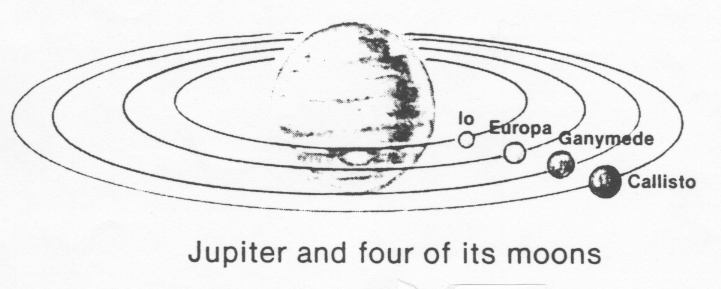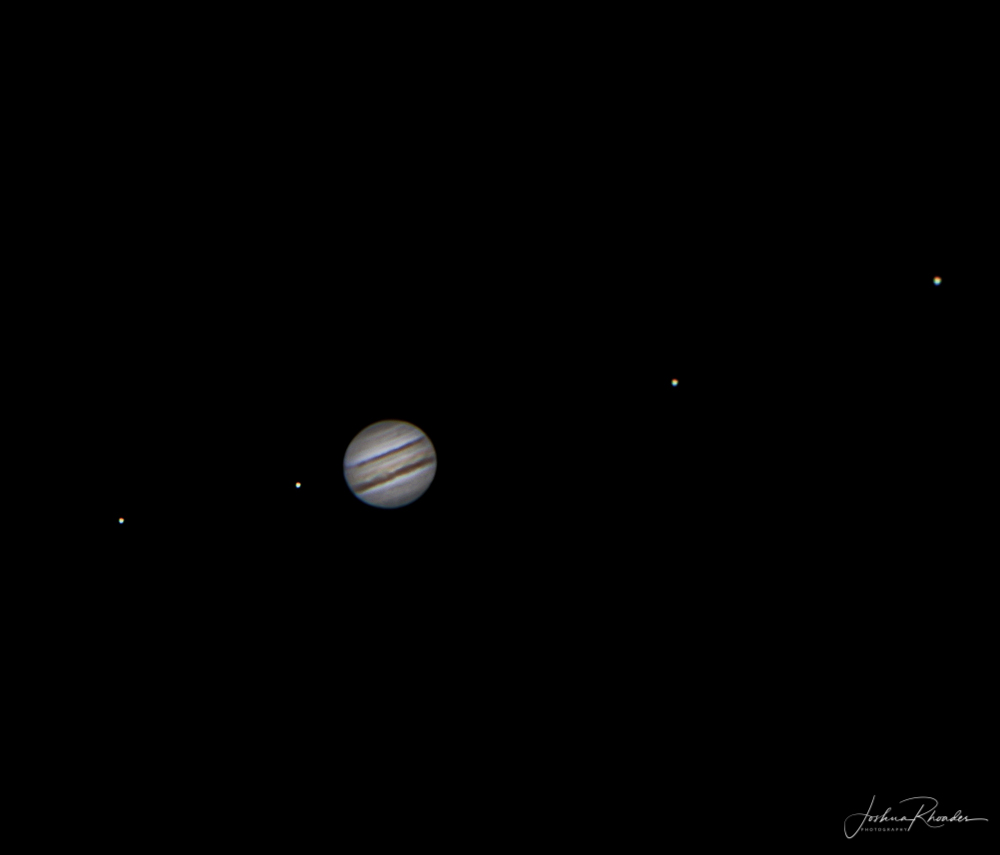
Knowing the time and day of your observation, match the arrangement with tables, diagrams, or models of the moons’ positions. Galileo used this system in his notebooks but never actually published it. A way to identify the Jovian moons when observing Jupiter is to draw the arrangement of the moons that you see or otherwise if you have the right equipment, photograph the view through your telescope. The numbers run from Jupiter outward, thus I, II, III and IV for Io, Europa, Ganymede and Callisto respectively. Galileo steadfastly refused to use Marius' names and invented as a result the numbering scheme that is still used nowadays, in parallel with proper moon names.


It would be the names proposed by Simon Marius (Simon Mayer), who pretended to have discovered the moons at the same time as Galileo, that would eventually prevail: Io, Europa, Ganymede and Callisto, published in his Mundus Jovialis in 1614. Johannes Hevelius called them the Circulatores Jovis or Jovis Comites, and Jacques Ozanam called them Gardes or Satellites (from the Latin satelles, satellitis: escort). On January 7, 1610, Italian astronomer Galileo Galilei discovered, using a homemade telescope, four moons orbiting the planet Jupiter. The discovery was announced in the Sidereus Nuncius ("Starry Messenger"), published in Venice in March 1610, less than two months after the first observations.Īmongst the other names that were put forward, there is Principharus, Victipharus, Cosmipharus and Ferdinandipharus, for each of the four Médici brothers, proposed by Giovanni Battista Hodierna, a disciple of Galileo and author of the first ephemerides ( Medicaeorum Ephemerides, 1656). many moons of Jupiter, they are visible even in a low-power telescope. It is made up of rock and ice and could contain liquid water. It is in synchronous rotation with Jupiter and therefore always shows the same face to Jupiter. Callisto is a little smaller than Mercury. At the grand-duke's suggestion, Galileo changed the name to Medicea Sidera ("Médici stars"), because the Médici were four brothers. The Galilean moons are the four moons of Jupiter discovered by Galileo Galilei. Callisto is the third largest moon in the solar system. Galileo first called his discovery the Cosmica Sidera, in honour of Cosimo II dé Medici ( 1590– 1621), grand-duke of Tuscany from 1609, whose patronage Galileo wanted to secure. This discovery supported the heliocentric theory of Nicolaus Copernicus and showed that not everything revolves around the Earth. Galileo observed the moons' motion over several days and realized that they were in orbit around Jupiter. They were first observed by Galileo on January 7, 1610.

In fact, if the observing conditions are perfect, it is just possible to see Callisto, the outermost, with the unaided eye. By far the largest of the many moons of Jupiter, they are visible even in a low-power telescope. The Galilean moons are the four moons of Jupiter discovered by Galileo Galilei. From the top, they are Io, Europa, Ganymede, Callisto Jupiter's 4 Galilean moons, in a composite image comparing their sizes and the size of Jupiter ( Great Red Spot visible).


 0 kommentar(er)
0 kommentar(er)
